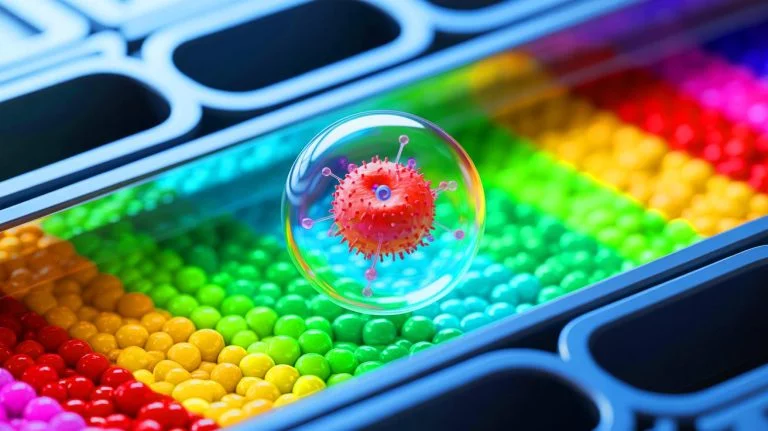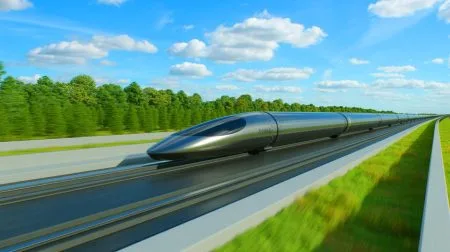| IN A NUTSHELL |
|
In a groundbreaking achievement, scientists at the Institute for Bioengineering of Catalonia (IBEC) have crafted the simplest artificial cell capable of autonomous movement. This synthetic creation, powered by enzyme reactions rather than biological machinery, marks a significant step forward in synthetic biology. The artificial cell, consisting of just a membrane, an enzyme, and a pore, mimics natural chemotaxis, a process fundamental to life. This innovation opens new possibilities ranging from drug delivery to environmental sensing, providing a glimpse into the future of synthetic biology and its potential applications in various fields.
Unraveling the Power of Chemotaxis
At the heart of this breakthrough is chemotaxis, the phenomenon where cells move in response to chemical stimuli. In nature, it is the mechanism that guides sperm to an egg or white blood cells to inflammation sites. The scientists at IBEC have replicated this process using only three components: a lipid membrane, an enzyme, and a membrane pore.
Liposomes, which are fatty bubbles made from the same molecules as natural cell membranes, form the structural basis of the artificial cell. When placed in a gradient of glucose or urea, the enzyme inside reacts with these molecules, creating an imbalance in concentration. This imbalance generates fluid flow along the vesicle’s surface, propelling it toward higher concentrations.
The membrane pore acts as a controlled gateway, enabling the necessary asymmetry for propulsion. This mimicry of natural processes with minimal components highlights the elegance of synthetic biology, stripping down complex behaviors to their chemical essence.
Implications for the Origin of Life
The simplicity of this artificial cell offers insights into the possible mechanisms of early evolutionary processes. By reproducing chemotactic behavior with minimal components, researchers have created a model that could mirror how primitive life forms moved and responded to their environments billions of years ago.
This line of research not only provides a window into the past but also offers a framework for future applications. The ability to engineer synthetic cells capable of autonomous movement could revolutionize fields such as drug delivery, where precision and control are paramount. Imagine a future where these micro-robots deliver medication directly to affected areas, offering targeted treatment with minimal side effects.
The potential applications extend beyond medicine. These synthetic cells could be used for environmental sensing, detecting pollutants, or even assembling into complex structures autonomously. The door is open for innovative solutions to some of humanity’s most pressing challenges.
Collaborative Efforts and Theoretical Foundation
This pioneering research was a collaborative effort involving multiple institutions, including the University of Barcelona, University College London, and the University of Liverpool. Theoretical support came from José Miguel Rubí’s team at the University of Barcelona, who provided predictions on the vesicles’ chemotactic behavior.
The collaboration underscores the multidisciplinary nature of modern scientific research, where expertise from various fields converges to solve complex problems. The work published in the journal Science demonstrates the collective effort required to push the boundaries of what is scientifically possible.
As research in synthetic biology progresses, such collaborations will be essential. They bring together diverse perspectives and expertise, fostering innovation and accelerating the development of new technologies.
Future Possibilities and Ethical Considerations
The creation of artificial cells capable of chemotaxis brings forth exciting possibilities and ethical considerations. As scientists continue to develop these technologies, questions about the implications of creating life-like entities arise. How will these innovations be regulated? What ethical guidelines should govern their use?
While the potential benefits are significant, including advances in medicine, environmental protection, and technology, the ethical landscape must be navigated carefully. Ensuring these developments benefit society while minimizing risks will require input from scientists, ethicists, policymakers, and the public.
The journey into synthetic biology is just beginning, and with it comes the responsibility to guide its trajectory responsibly. As we look to the future, the balance between innovation and ethical responsibility will be crucial in shaping the impact of these groundbreaking advancements.
The development of an artificial cell capable of autonomous movement is a testament to the ingenuity and potential of synthetic biology. As researchers continue to explore this frontier, new applications and ethical questions will undoubtedly arise. How will society embrace and regulate these advancements to ensure they benefit humanity?
Did you like it? 4.6/5 (20)








Wow, synthetic cells moving on their own? What’s next, talking robots? 🤖
Is it really safe to play around with creating life-like entities? Sounds like a sci-fi movie plot! 🎬
Thanks for the article! This could really change the future of medicine. 😊
What are the potential risks of these synthetic cells escaping into the environment?
Can someone explain how chemotaxis works in simpler terms? I’m a bit lost. 😅
Great article! Are there any updates on potential regulations for this technology?
Just pure chemistry? Sounds like magic to me! 🧙♂️
Is this the beginning of real-life Jurassic Park? 🦖
Fascinating read! Could these synthetic cells be used in cancer treatment?
Interesting, but how do they ensure these cells don’t evolve uncontrollably?
Thank you for sharing this incredible breakthrough!
What are the ethical implications of creating artificial life forms?
How soon can we expect to see practical applications of this technology?
Is there any risk of these cells being used for harmful purposes? 🤔
Are these synthetic cells biodegradable?
I’m skeptical. How can something so simple have such a huge impact?
Mind blown! Can’t wait to see what’s next in synthetic biology. 🤯
Can these cells replicate or divide like natural cells?
Thanks for the insights! This could revolutionize environmental sensing.
How do they control where the cells move without motors?
Is this the start of synthetic life taking over the world? 😱
Why aren’t these developments more widely reported in mainstream media?
So cool! Could this technology help in space exploration? 🚀
What happens if these cells come into contact with human cells?
This is both exciting and terrifying at the same time!
How do they ensure these artificial cells don’t cause an ecological imbalance?
Thank you for the detailed explanation. This is groundbreaking work!
Could these cells be used to clean up oil spills or other environmental disasters?
Is there a possibility of these cells being used in warfare? 💣
When will we see these synthetic cells in commercial products?
How do these cells compare to natural cells in terms of efficiency?
Does this mean we’re one step closer to creating synthetic organs? 🏥
I’m concerned about the ethical implications of this technology.
Could these cells become a new form of pollution if not regulated?
Exciting stuff! What are the next steps for this research?
Thanks for the article! Are there any similar advancements happening elsewhere?
This is a dangerous path. Have we learned nothing from history?